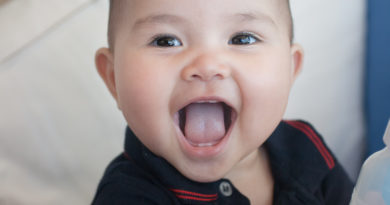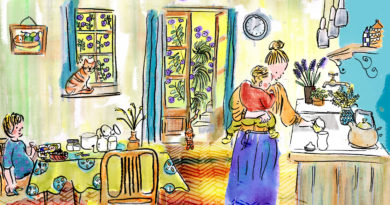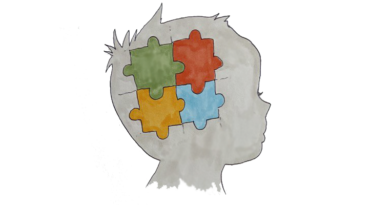Breastfeeding and the Environment
Changes in the environment have a devastating effect on us all. One of our traditional nursery rhymes has changed into the following:
Jack went puffing up the hill
Jill came panting after
There must be a solution
To all this pollution
Or they’ll never get down again
But there is no change in the value of breastfeeding and breastmilk for our environment. On the contrary: as LLL observes, it is a free, natural, renewable, safe resource which helps minimise the effects of environmental exposure and is uniquely suitable for feeding our infants. In fact, the benefits of breastfeeding may prove to be essential to compensate for and outweigh the risks of our environmental toxicity.
There is no food more locally produced, more sustainable or more environmentally friendly than Mother’s breastmilk; it is a natural and renewable resource and gives babies all the nutrients they need for around the first six months.
Breastmilk relieves the environment of the huge burden of formula or breastmilk substitute manufacture, transport, packaging, disposal, etc. on our world. There is also the risk that formula contains toxic elements derived from the agricultural products it uses, the manufacturing process, transportation, etc. Research shows this has not been fully examined. None of this occurs with breastfeeding, where the baby draws its milk direct out of its mother at the perfect temperature.
Breastmilk can also save health costs, as breastfed babies enjoy better health and suffer fewer health problems, as multiple studies have shown (1). Breastfed babies are five times less likely to be hospitalised with gastroenteritis (2). And the bonding process between mother and baby, helps to build up feelings of confidence and security in both. Research shows that breastfeeding may, among other factors, help to protect against maternal child neglect and maltreatment (3).
Breastfeeding is one of the natural ways of child spacing and is a cost-effective means of avoiding over-population – an increasing burden for our environment – in many parts of the world. When correctly practiced, it ensures a delayed return to menstruation of up to 14 months, thus saving the environmental and purchasing costs of pads and other female hygiene devices. By suppressing a mother’s fertility, breastfeeding can thus save vast resources that are required in the production and disposal of sanitary hygiene products.
There is a second aspect to the word environment, aside from the issue of climate change and its effect on the baby. How does the environment around mothers influence their lives, their thinking, their well-being., their wish to breastfeed? Is the environment hostile and critical? Do they experience unsupportive friends, relatives or even partners? Is their place of work breastfeeding-friendly, recognising the value of breastfeeding and providing facilities to do so? Is breastfeeding regarded as a sexual issue, with the uncovering of the breast, particularly in public places? A few years ago in the U.S., mothers breastfeeding in public were asked to appear in court and pay a fine, and in the age of social media breastfeeding in public has had a significant presence. Clearly, more support from governments, local authorities, the medical profession and businesses will be instrumental in bringing about a protective supportive environment for breastfeeding mothers.
Breastfeeding has a positive effect on brain development and lowers stress levels, and it helps protect mothers against ovarian and breast cancer, osteoporosis, post-natal depression and developing diabetes (4). It can also protect against obesity, which is becoming an increasing drain on resources in the world, and it can help babies to regulate their own appetite (5). In the first eight months of life, a formula-fed baby consumes 30,000 calories more than a breastfed baby (6).
La Leche League states that in spite of research showing that are some contaminants in mother’s milk, it is nevertheless clear that even in a polluted world, breastfeeding offers advantages that outweigh the risk of ingesting possible contaminants. Indeed the benefits of breastfeeding may prove to be essential to compensate for and outweigh the risks of toxic effects from the environment. While it is desirable that science should focus on removing chemicals from our environment, it is also imperative that we recognize the value of human milk, which is an unprocessed and natural source of perfect nutrition for infants.
By Joanna Koch
Joanna has been a La Leche League advisor since the early 1990s. A mother from one of her groups launched the idea of Mothering Matters (now Family Matters) in 1994, which has now developed into a successful online website, helping mothers, fathers and families over many years. Joanna has three children and eight wonderful, loving (and breastfed) grandchildren.
Illustration by Albina Nogueira
Albina Nogueira has been a primary school teacher since 1992, and a writer and illustrator since 2006. She currently lives in Switzerland and teaches Portuguese. She is also the author of Letters to Grandparents and Hairdresser. To find out more visit: http://albinanogueira.blogspot.ch/ or see her books on Amazon.
Sources:
(1) Breastfeeding and Maternal and Infant Health Outcomes in Developed Countries; 2007, https://aapgrandrounds.aappublications.org/content/18/2/15
(2) Breastfeeding protects against acute gastroenteritis due to rotavirus in infants, 2010, https://link.springer.com/article/10.1007/s00431-010-1245-0
(3) Does Breastfeeding protect against substantiated child abuse and neglect? A 15-year cohort study, 2009, https://pediatrics.aappublications.org/content/123/2/483.short
(4) Breastfeeding and the maternal risk of type 2 diabetes: A systematic review and dose – response of a meta-analysis of cohort studies, 2/2014, https://www.sciencedirect.com/science/article/abs/pii/S0939475313002743
(5) Does Breastfeeding protect against pediatric overweight? Analysis of longitudinal data from the Centre for Disease Control and Prevention Pediatric Nutrition Surveillance System, 2004, https://pediatrics.aappublications.org/content/113/2/e81.short
(6) Breastmilk and the Environment, La Leche League GB https://www.laleche.org.uk/breastmilk -and-the-environment




